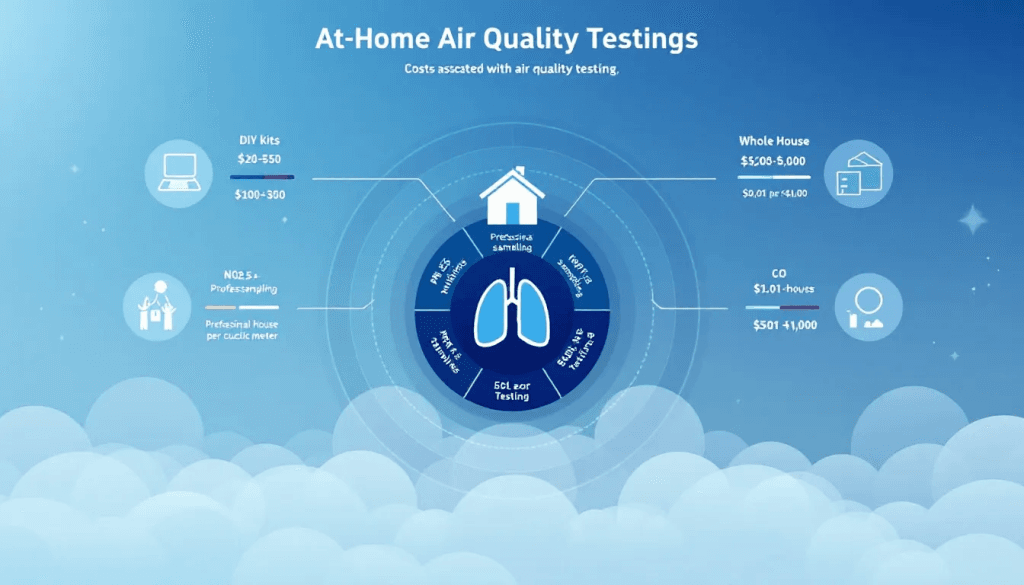The American Industrial Hygiene Association (AIHA) has established important guidelines regarding mold and dampness in buildings. Understanding these professional standards is crucial for maintaining healthy indoor environments and protecting occupant health.
Health Risks Associated with Mold and Dampness
Mold and dampness in buildings can pose significant health risks to occupants. According to AIHA guidelines, exposure to mold and damp conditions can lead to various health problems, including:
Respiratory Symptoms
- Coughing and throat irritation
- Wheezing and shortness of breath
- Chest tightness
- Difficulty breathing
Asthma
- Triggering of asthma attacks
- Worsening of existing asthma symptoms
- Development of asthma in sensitive individuals
Other Health Conditions
- Hypersensitivity pneumonitis - An inflammatory lung condition
- Rhinosinusitis - Inflammation of nasal passages and sinuses
- Bronchitis - Inflammation of the bronchial tubes
- Respiratory infections - Increased susceptibility to lung infections
AIHA Key Conclusions
The American Industrial Hygiene Association has reached several important conclusions about mold and dampness management:
Multi-Stakeholder Involvement
Multiple stakeholders should be involved in moisture control efforts, including:
- Building owners and managers
- Indoor air quality professionals
- HVAC specialists
- Occupants and tenants
- Public health officials
Comprehensive Reporting
Reports should be comprehensive and actionable, providing:
- Clear identification of moisture sources
- Specific recommendations for remediation
- Prioritized action items
- Follow-up monitoring plans
Professional Inspection and Sampling
Informed inspection and sampling methods are crucial for:
- Accurate assessment of contamination
- Proper identification of moisture sources
- Effective remediation planning
- Verification of cleanup success
Concurrent Issues
Indoor air quality issues are commonly concurrent with mold problems, requiring:
- Comprehensive assessment approaches
- Multiple testing parameters
- Integrated remediation strategies
- Ongoing monitoring programs
Understanding Normal vs. Problematic Moisture
It's important to understand that some moisture in buildings is normal and expected:
"Wetting and drying in small amounts is normal in buildings and pose little risk for occupant health as long as steps are taken to dry the materials as quickly as possible."
The key is rapid response to moisture events and preventing prolonged dampness that allows mold growth.
Moisture Control Strategies
Prevention
- Proper ventilation in high-humidity areas
- Moisture barriers in construction
- Regular maintenance of building envelope
- Prompt repair of leaks and water damage
Detection
- Regular inspections for signs of moisture
- Monitoring humidity levels throughout the building
- Professional assessments when problems are suspected
- Occupant education on reporting moisture issues
Response
- Immediate action when moisture is detected
- Professional remediation for significant problems
- Documentation of all remediation efforts
- Follow-up testing to verify success
Professional Standards and Best Practices
Inspection Protocols
Professional inspections should include:
- Visual assessment of all areas
- Moisture mapping with specialized equipment
- Air quality sampling when appropriate
- Documentation of findings and recommendations
Sampling Methods
When sampling is necessary, professionals should use:
- Standardized collection methods
- Appropriate sample types for the situation
- Proper chain of custody procedures
- Accredited laboratory analysis
Reporting Standards
Professional reports should provide:
- Clear explanation of findings
- Specific recommendations for action
- Prioritized remediation steps
- Timeline for implementation
The Importance of Professional Assessment
Given the complexity of mold and moisture issues in buildings, professional assessment is often necessary to:
- Accurately identify the extent of contamination
- Determine root causes of moisture problems
- Develop effective remediation strategies
- Ensure proper cleanup verification
Conclusion
Understanding and managing mold and dampness in buildings requires a comprehensive approach that follows professional guidelines. The AIHA position statement emphasizes the importance of multi-stakeholder involvement, informed inspection methods, and comprehensive reporting.
While small amounts of moisture are normal in buildings, prolonged dampness can create serious health risks. Quick response to moisture events, proper ventilation, and professional assessment when needed are key to maintaining healthy indoor environments.
If you suspect mold or moisture issues in your building, consult with qualified indoor air quality professionals who follow AIHA guidelines and industry best practices for assessment and remediation.
